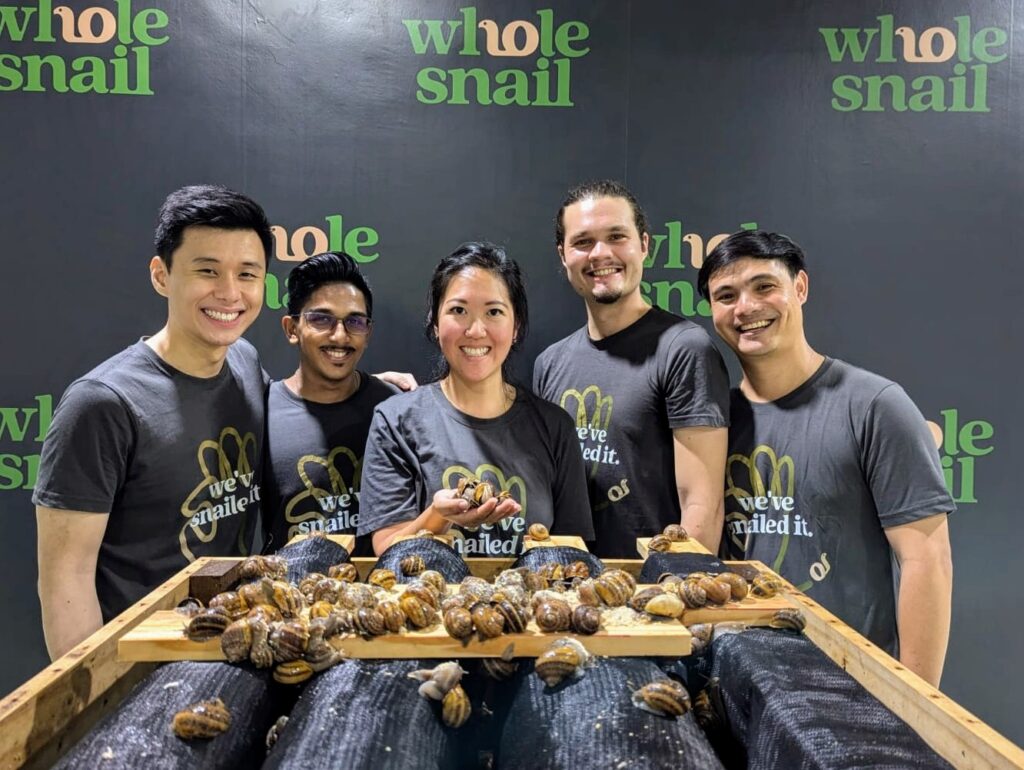Are Snails The Delicacy Powering Both Haute Cuisine and High-End Skincare?
A relatively new industry, heliciculture (the farming of snails) has the potential to contribute sustainably to fine dining as well as produce a sought-after ingredient in the beauty industry
17 June 2025
Share this exclusive content from Saladplate

WholeSnail is a commercial snail farm | Photo Credit: WholeSnail
It’s undeniable that snails, or escargot as the French and foodies will say, are inextricably linked to fine dining. While in Asia, they are most often found on the menus of fancy Western restaurants, in Europe, they are popular across cultures.
In France, the estimated annual consumption of snails is approximately 40,000 tonnes, and the country accounts for 25% of global imports. After the French, come Italy, Spain and Germany. However, what is surprising is that the most common way to acquire snails is by foraging for wild snails, which mainly takes place in the South of France. This requires foragers to wait until it is raining, and then go out and physically pick the snails. It’s a time-consuming and manpower-intensive process.
Escargot is a French delicacy, traditionally served with garlic butter and herbs | Photo Credit: Escargot by nodar77 via Envato Elements
With heliciculture on the rise, this could change.
A relatively new industry, heliciculture, or the farming of snails, first started in 2015 in Ukraine. At its peak, there were reportedly at least 400 snail farms in the country. While the COVID-19 pandemic wreaked havoc on the largely export-based industry, snail farms have started to emerge around the world, including in West Africa, the United States, the United Kingdom, and even in Singapore. However, Touchstone Snails, a Cyprus-based company on snail breeding, notes that only 15 per cent of snails consumed come from farming, while 85 per cent come from the wild.
Stephanie Kudus of WholeSnail, Singapore’s first commercial snail farm, believes this will change. “While the majority of the snails right now are sourced from the wild, as we develop more land, the supply will start to decrease.” She also adds, “Farming allows us to keep out unwanted pests and control the life cycle of the snail. Diseases that you find in snails, such as rat lungworm, would be very rare in an indoor farm as we can have the right controls in place to mitigate against these pests.”
At WholeSnail, everything about the snails and their life cycles is controlled, which Stephanie believes is another advantage farming has over foraging. She is passionate about the potential she sees in the snails, from the industries that can benefit, to their sustainability potential, given their much lower carbon footprint. She is committed to making snails viable not just as a source of protein but also raising awareness of them as a source of caviar. “Snail caviar is seen as a more sustainable caviar, and it sells for about two-thirds the price of beluga. So if we could get into that market, we know we’re good.”
Snail caviar was in the news recently as British TV presenter Jeremy Clarkson was quoted saying in his Sunday Times column that he enjoyed it as a weight-loss snack and that “it does taste and feel like the real deal”.
This may set off a demand for the elusive escargot caviar, and it remains to be seen if it starts appearing on restaurant menus.
As a cosmetic ingredient, snail slime, or “mucin”, has already had a moment in the spotlight thanks to Korean skincare using it as an ingredient in the early 2010s. In Ireland, Bragan Skincare is a family-run snail farm that is already focusing on using snail mucin in skincare products. Run by Kieran Corley, who noticed how effective snail mucin was on his skin, they work with a company in Rome to create small-batch products using snail mucin’s hydrating, exfoliating and firming properties. Their work is backed by a study in the Journal of Integrative Dermatology, which states that snail secretion and snail egg extracts “increased skin hydration, decreased transepidermal water loss (TEWL), antimicrobial activity, and improved healing after radiation therapy and fractional laser treatment.”

Photo Credit: Nadianb via Envato Elements
Now, interest in snail mucin as an ingredient is growing again. Soko Glam, one of the largest U.S. retailers of Korean products, has touted snail mucin’s return in skincare this year, driven by Gen Z’s TikTok discovery. Brands like CosRX and Beauty of Joseon are known for their snail mucin products. WholeSnail aims to tap into this market. Says Stephanie, “We hope to produce high-quality snail slime as an ingredient to use in the medical and cosmetic industry,” she says. Adding that she hopes more tertiary institutes will study the proteins in slime and unlock further use apart from the usual suspects, such as anti-ageing.
So while the industry is currently small, for those interested in joining the snail hustle, there could be great potential. At the very least, it’s inventory you can keep track of. Says Stephanie with a laugh, “I know I won’t be outrun by a snail.”

Photo Credit: WholeSnail
Author: Karen Fong
Karen Fong is a Singapore-based writer and editor who has previously spent time in Hong Kong, Shanghai and Canada. She writes parenting, lifestyle and travel content and has worked with publications including The Singapore Women’s Weekly, DestinAsian, Travel+Leisure Southeast Asia and Prestige Hong Kong.



